An Unsolved Murder, a Love Affair, and Disney—This L.A. Club Has Seen It All
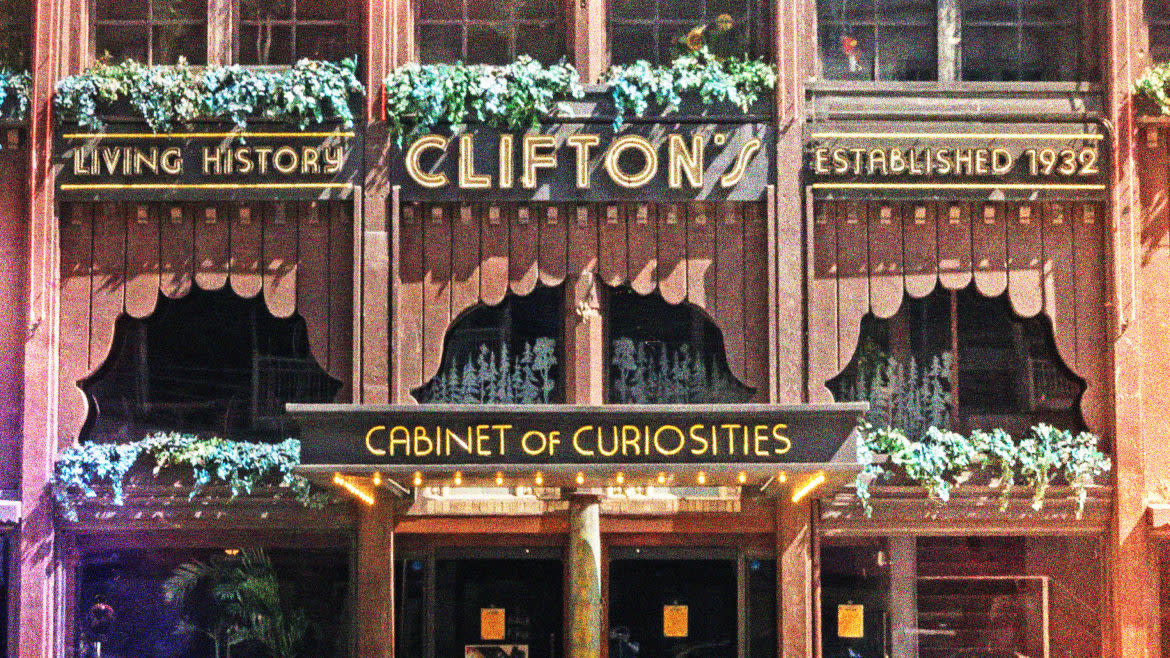
- Oops!Something went wrong.Please try again later.
In February 2021 Andrew Meieran drove the entirety of Route 66. His bucket-list road trip took him through a series of views across the country that sound like something out of an Americanized Tolkien novel: navigating through multiple snow storms, crossing through the Painted Desert, and a stop at the Petrified Forest. But at the end of 2,448 miles, he was once again in familiar territory, ending his travels in downtown Los Angeles on Seventh and Broadway—almost at the front door of his nightclub, Clifton’s Republic.
Sure, he had seen people complete the journey before. (He laughs as he remembers one woman jumping out at the club valet and happily shrieking “I did it!”) But taking the trek helped Meieran understand just how much the Clifton’s legacy was tied into not only the city’s legacy, but the history of America as a whole.
“There was that moment where we felt that strong echo of history,” he says. “And the weight of all of these people coming in search of this dream with expectation and wonder. You could sort of feel that presence, which was really neat.”
Opened in 1931 as a chain of eight eateries (then called Clifton’s Brookdale), Clifton’s Republic has been an active participant in history in a way that puts Forrest Gump’s history-spanning antics to shame.
The owner, Clifford Clinton, inspired by Christian mission trips to China as a child, opened the eatery’s food line to anyone who needed it. During the Depression, an estimated 2 million people took him up on “Dine Free Unless Delighted,” motto, grabbing hearty a la carte items from the cafeteria line. (He would later go on to found Meals for Millions after feeding people for free became unsustainable.)
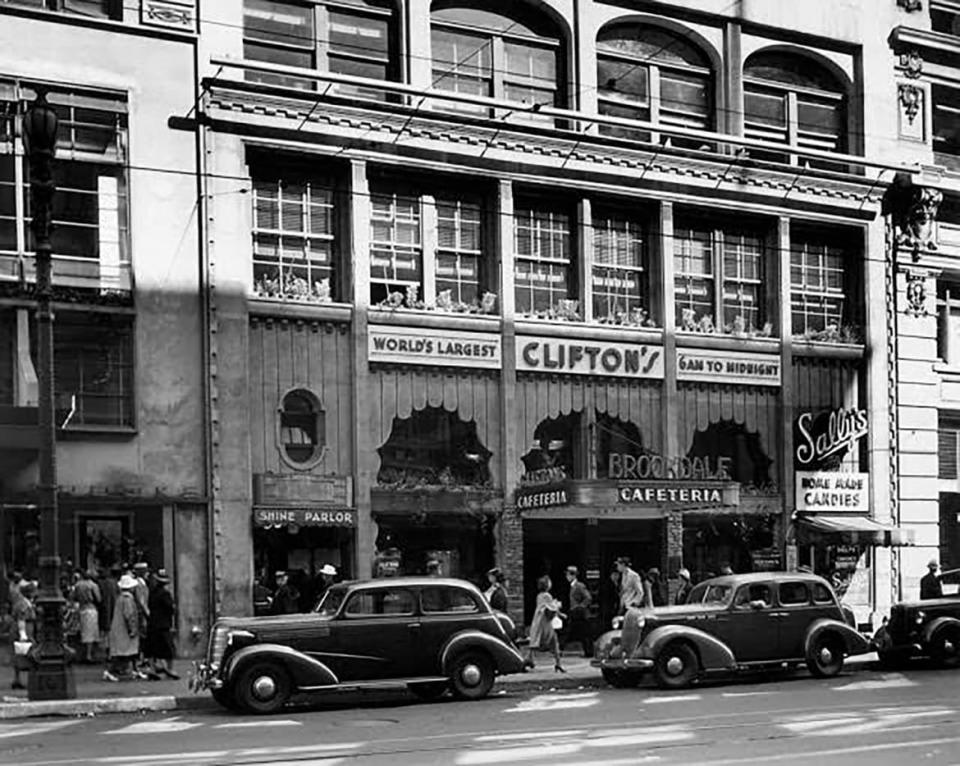
Among those to take advantage of the policy were Ray Bradbury and Charles Bukowski, the former who now has a corner booth named after him on the upper floor, the latter who wrote about the joys of Clifton’s cheap eats in his 1982 book Ham on Rye. And anyone who appreciates Huell Howser’s awe-infused television show will be glad to know there’s a California Gold episode where the hyperlocal travel celebrity stops and pays the nightclub a visit.
But while Clifton’s aimed to be delightful (early menus offer a free custom birthday cake, fanciful interiors looked like proto-tiki bars, and vintage photos show tables with full lobsters) it was never exclusionary. From the 1940s through the 1960s, all of Clifton’s eateries where listed in The Negro Motorist Green Book, a guide that helped Black travers determine where they would be safe. (Clifton’s is now one of the 3 percent of establishments listed that are still around.) Did Clinton lose money due to his inclusive environment? Probably. Did he care? Judging by his weekly newsletter where he pushed back against complaints by writing, “If colored skin is a passport to death for our liberties, then it is a passport to Clifton’s,” probably not.
As someone who can easily discuss the complexity of Charlie Chaplin’s legacy, Laurel Canyon myths, and the former location of the Brown Derby (now an anonymous strip mall), it was that colorful legacy that first led Meieran to purchase the building in 2010. Already the owner of The Edison, a historic bar in its own right, he wanted to further invest in the downtown Los Angeles community. Plus, with decades upon decades of history sandwiched on top of each other, he enjoyed the renovation process which forced him to decide just what era of the building’s history to pay tribute to. (Answer: many of them.) The process of restoring the building to its former glory would take the larger part of four years and $14 million.
Yes, it’s still a nightclub, yes it’s also a lounge, and soon it’ll be a cafeteria again. But Clifton’s real power comes from its combination of purposes and functions–making it one of the most unusual social spaces in the city. Well, as long as you’re willing to visit during their still-limited post-pandemic hours.
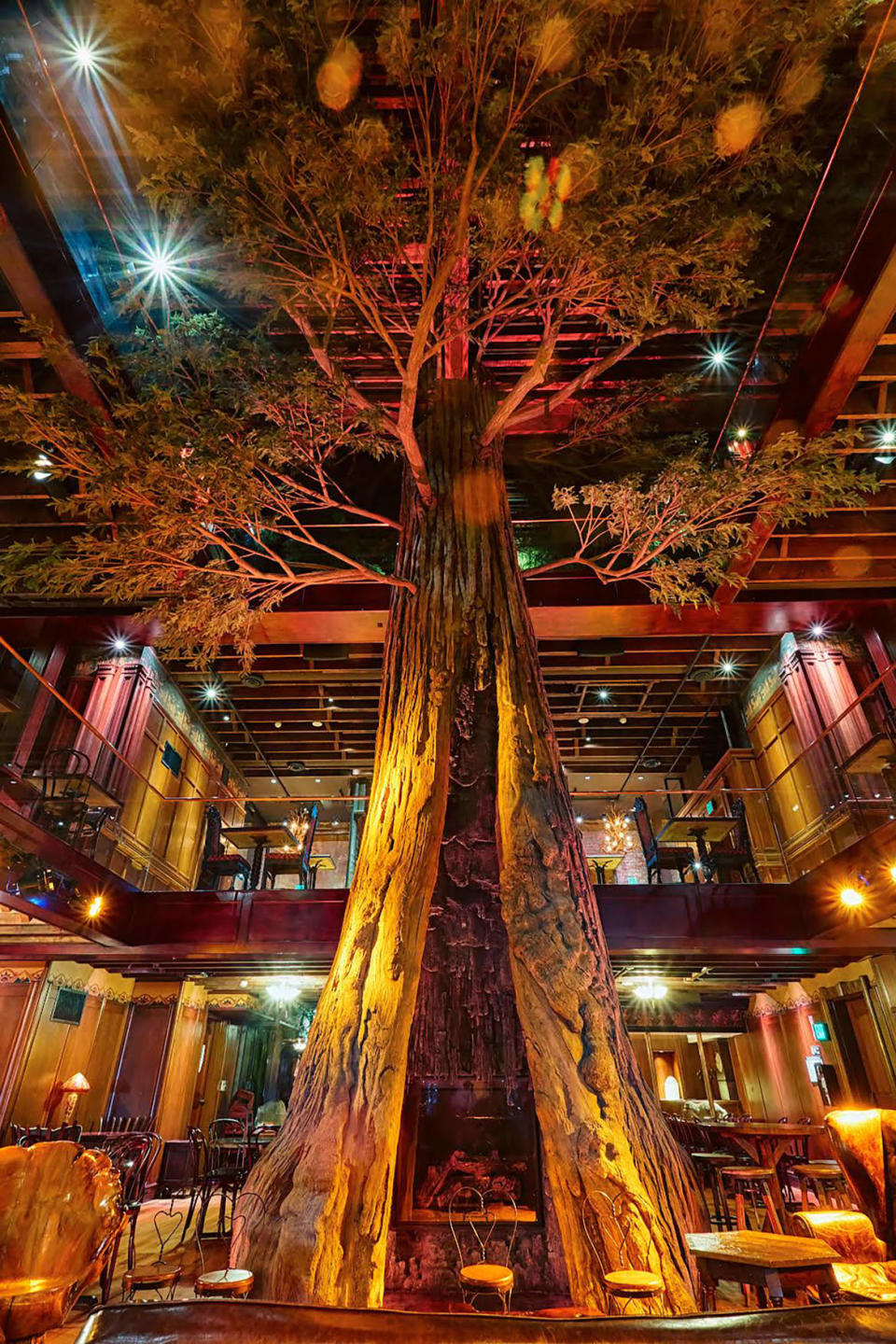
To the relief of many, after reopening in 2015, Clifton’s still contained its off-kilter charm. Inspired by both Muir woods and the Ahwahnee Hotel of Yosemite, a tree emerges from the center of the dancefloor, towering 40 feet above the ground floor. (And to the disbelief of almost everyone who sees it for the first time, it’s an original design element, and capable of holding aerialists for special parties.) The 47,000-square foot interior is partitioned into different, micro-themed areas. For a time, patrons could once again get Jell-O, mac and cheese, and carved meats in the basement, all loosely based on original recipes. (An amenity paused before COVID that Meieran plans to bring back.) But now they can also sip classic drinks at one of five dark-wood bars, including the Monarch Bar (with a focus on California wines and beers, and boozy soda fountain concoctions), and The Gothic Bar (located in the backroom where L. Ron Hubbard, Forrest Ackerman, and Ray Bradbury used to swap ideas), and Pacific Seas, a Polynesian-inspired Tiki-Bar accessible by walking upstairs next to an actual waterfall, and slipping behind a mirror on the second floor.
The outside marquee announces a “Cabinet of Curiosities,” a promise that Clifton’s fulfills with odd and ends tucked into nearly every corner. Want to see a stuffed buffalo (and murals curated by the Los Angeles Natural History Museum), a 250-pound meteorite, or a tea cup that was stolen from the restaurant only to be returned decades later? The answer that Clifton’s is banking on is, why wouldn’t you?
It’s a weird patchwork of visual vibes that made it easy for Mad Men, Parks and Rec, and Gangster Squad to all use different corners of the club as different filming locations. But as Meieran learned, when 190 million people go through the doors of an establishment between 1932 and 2010, there’s bound to be a few magical occurrences—including inspiring one of the most influential creatives on earth.
During a meeting with Diane Disney Miller, while he was working to bring the Edison bar concept to Disney Springs, Florida, he learned that the Disney family used to regularly visit Clifton’s twenty years before Disneyland’s opening. And as Miller herself recalled, it was the ornate upstairs stone fireplace that made Disney realize his parks needed a strong focal point. Meieran gets a bit choked-up as he recounts the exchange.
“I told her, ‘People always say that Clifton’s is very Disneyesque,’” he says. “And she said, ‘You can never let people tell you that it’s Disneyesque. Disney is very Cliftonsesque.’”
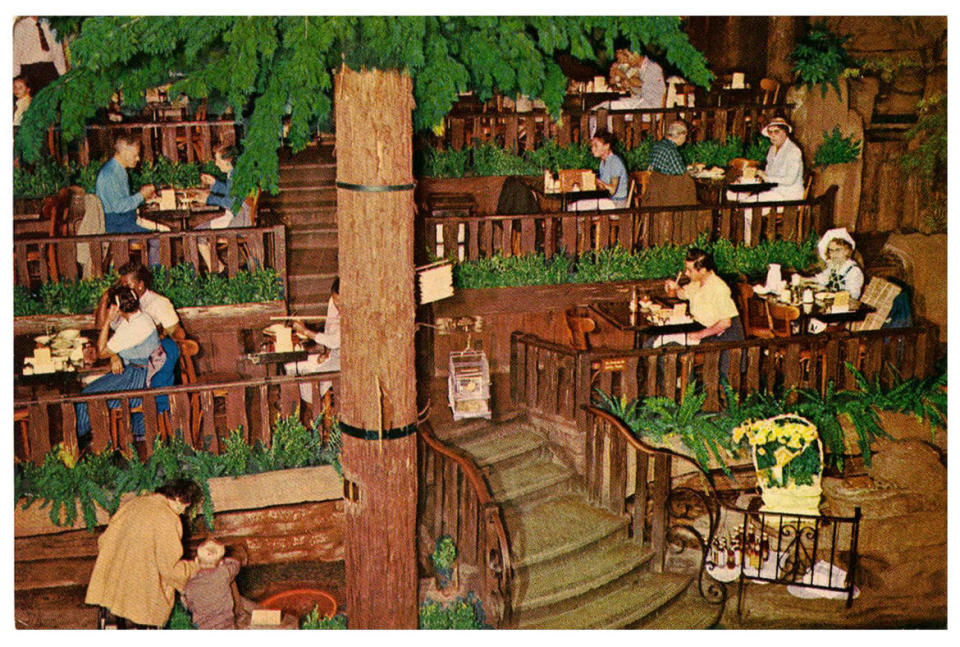
Of course, if there’s Disney-like wonder, there also has to be a supernatural element at work. Half way through our conversation, my recorder glitches, prompting Meieran to quip “Ghosts!” It’s hard to tell if he’s joking or not. But as he discovered while the building was under construction, there are plenty of unexplained forces at work. Discovering a room stuffed to the brim with gallon-sized jars of tomato sauce was actually easily explained. As noted by a blasé delivery man, after Clifton’s heiress Jean Clinton Roeschlaub’s tragic murder in 2006 (which was never fully solved), her final food order had never been altered—leading to the comical excess. But the unexplained ashes that he cleaned off from the ballroom one afternoon were harder to explain. As the very much married man and father found out when a friend called him at home, freaked out over a headline reading “My Mother Was the Mistress of The Owner of Clifton’s Cafeteria,” the previous owner was also a beloved family man...with a sister wife on the side. After his lover’s death in 2011, her children snuck into the construction zone, and made the club her final resting place.
But nothing prepared him for discovering a still glowing neon sign one day during construction. Sealed off behind a wall in the women’s restroom, and hardwired into the building’s power without a traditional power switch, it’s believed that the sign had been glowing since 1939. They carefully put it on display without ever switching it off, and now the simple glass curves serve as Clifton’s eternal flame, one that the former club owners paid an estimated $17,000 in electrical bills to keep going. But what’s more interesting to Meieran, is where it was discovered—against a wall that housed the tailor shop next door where his grandfather once worked.
“There was something very spiritual about that moment,” he says. “That’s the best way I could even put that. My grandfather was this wonderful individual. He brought his family over from England on the Queen Mary, started a new life, and was a tailor. So, there was just something really poignant.”
Seeing people return to relive memories seems to be one of the establishment’s many hard-baked joys, something that’s happening more and more as the club establishes a post-COVID schedule. In a city known for disregarding its own history, smashing the past in the name or reinvention, Clifton’s is a space that has fought back by preserving that history within its surreal walls. As a result, the club attracts strong emotions—and quite often, nostalgic visitors provide another piece of the puzzle that Meieran suspects he’ll spend a lifetime assembling. With a sense of wonder, he recalls seeing an old woman energetically rush in one day shortly after opening. She was 103, it was her birthday, and for her last act behind the wheel, she wanted to drive her family to lunch. Meieran sat rapt as she described visiting the cafeteria in the 1930s and 1940s, and getting pie with her grandmother after seeing Charlie Chaplin films. Like many of Clifton’s unexpected stories, the conversation was a gift that he never expected to receive.
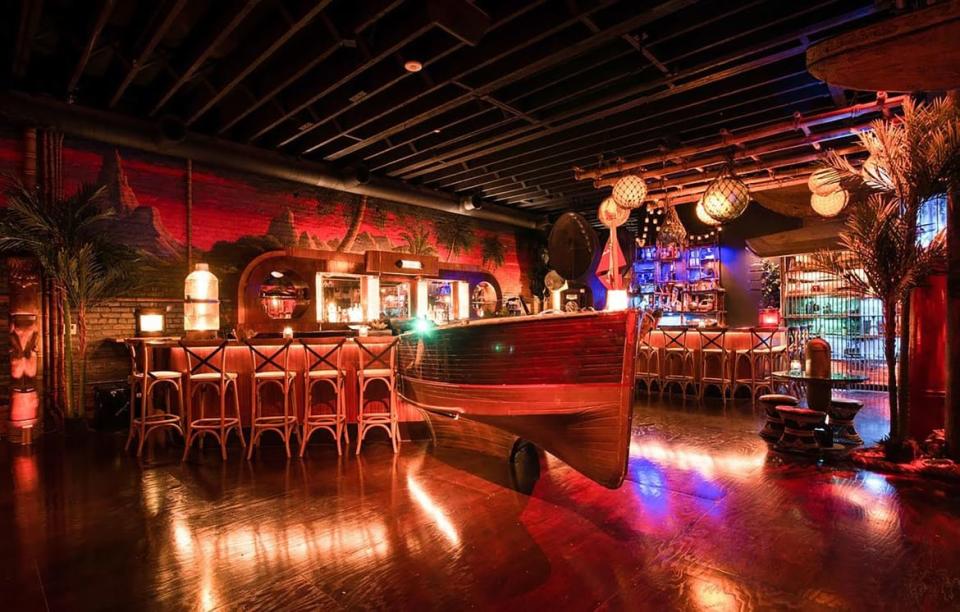
“Just talking to her was this wonderful thing,” he says. “There was a wonderful sense of ‘It’s still here!’ And I’m like, ‘You’re still here!’ I never thought that I would get to meet somebody who was there when it opened. But that’s what's interesting about Clifton’s. Clifton’s has survived. It survived and grew out of the depression and survived World Wars. It survived other wars, social unrest—it is a survivor. And so many places aren’t. Even during the pandemic, institutions that have been wiped from across the country and globe. And I think what’s always been important is that it’s so integral to the community. It’s such an important element—it's such a central part. People can question whether I made the right choices or question whether or not it’s true to the original. But my commitment is to make sure that more generations get to experience it.”
Get the Daily Beast's biggest scoops and scandals delivered right to your inbox. Sign up now.
Stay informed and gain unlimited access to the Daily Beast's unmatched reporting. Subscribe now.

